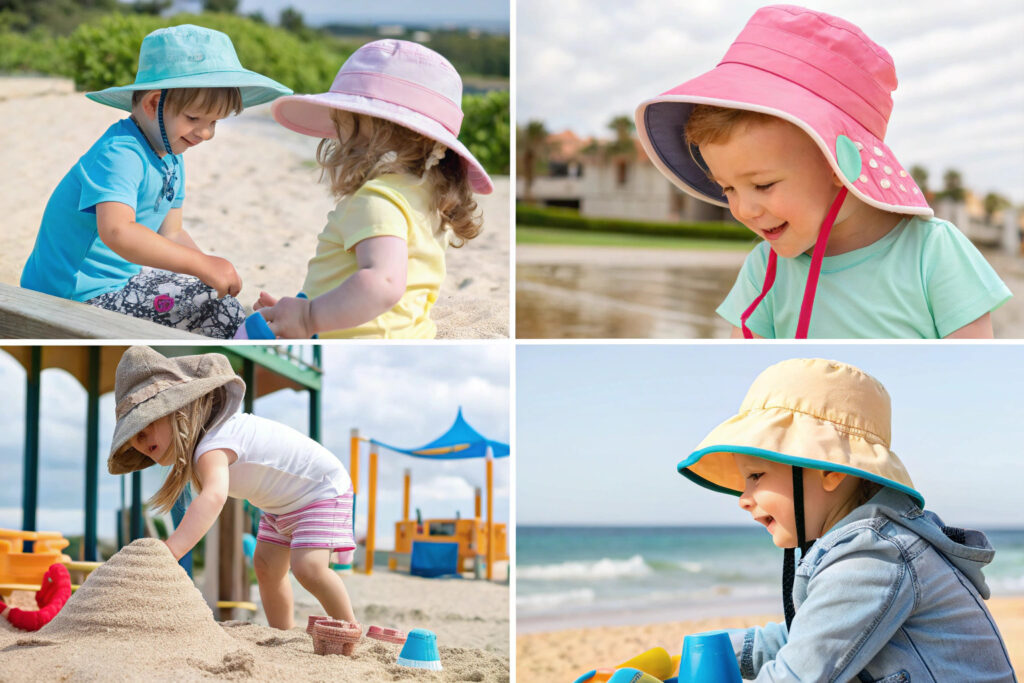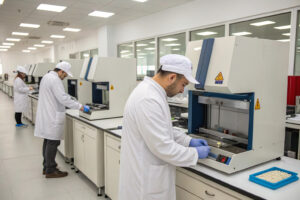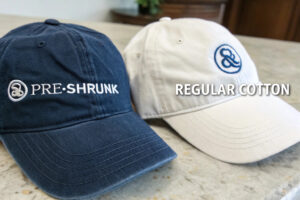Children's delicate skin requires far more protection from sun damage than adult skin, yet many parents unknowingly choose sun hats based on style rather than proven protection. Standard hats often provide inadequate defense against harmful UV radiation, leaving children vulnerable to both immediate sunburn and long-term skin damage. The consequences of inadequate sun protection during childhood can last a lifetime.
UPF-rated children's sun hats are crucial because they provide scientifically verified protection that blocks over 97.5% of harmful UV radiation, significantly reducing the risk of sunburn, heat exhaustion, and long-term skin damage while encouraging healthy outdoor habits from an early age.Unlike regular hats that may offer inconsistent coverage, UPF-rated hats undergo rigorous testing to ensure reliable protection across all areas of coverage.
This comprehensive guide explores the scientific basis for UPF protection, design features that enhance safety, material considerations for children's sensitive skin, and practical benefits that make UPF-rated hats essential for childhood sun safety.
What scientific evidence supports UPF protection for children?
Understanding the scientific foundation behind UPF ratings helps parents and caregivers make informed decisions about sun protection. The evidence demonstrates why specialized sun protection matters significantly for children.
Multiple scientific studies and medical organizations have established that childhood sun exposure directly correlates with skin cancer risk later in life, making verified sun protection during early years critically important for long-term health.

How does children's skin differ from adult skin?
Children's skin is anatomically and functionally different from adult skin, making it more vulnerable to UV damage. A child's epidermis is 20-30% thinner than an adult's, with less melanin protection and underdeveloped natural defense mechanisms. This structural difference means UV radiation penetrates more deeply into the dermal layers, causing more significant cellular damage. According to the Skin Cancer Foundation, just one or two blistering sunburns in childhood can double the risk of developing melanoma later in life. These biological differences explain why children require more rigorous sun protection than adults, particularly through specially designed UPF-rated clothing and hats.
What does the UPF rating system actually measure?
The UPF (Ultraviolet Protection Factor) rating system measures how effectively a fabric blocks solar ultraviolet radiation. A UPF rating of 50, which is the highest rating available, indicates that the fabric blocks approximately 98% of UV radiation, allowing only 1/50th (2%) of UV rays to penetrate through to the skin. This scientific testing evaluates multiple factors including fabric composition, color, construction, stretch, and finish. Unlike SPF (Sun Protection Factor) which measures protection time against sunburn, UPF measures the fabric's inherent ability to block UV radiation regardless of time exposure. This distinction makes UPF ratings particularly valuable for children who may spend extended periods outdoors.
What design features maximize sun protection for children?
Beyond the UPF rating itself, specific design elements significantly enhance the protective qualities of children's sun hats. These features work together to create comprehensive coverage that standard hats cannot match.
Optimal protective designs include wide brims with specific measurements, neck protection extensions, full crown coverage, and secure fit systems that maintain protection during active play.

Why are brim width and shape crucial for protection?
Brim width directly determines how much shade reaches a child's face, ears, and neck—areas particularly vulnerable to sun exposure. The American Academy of Dermatology recommends brims of at least 3 inches to provide adequate facial protection, with wider brims (4-5 inches) offering superior coverage for ears and neck. The brim shape also matters—all-around brims provide consistent protection regardless of the sun's position, while asymmetrical designs might offer extended neck protection. Sturdy brims that maintain their shape ensure consistent coverage rather than flopping down and obstructing vision or blowing up and exposing skin. These design considerations create the physical barrier that complements the fabric's UPF rating.
How does neck protection prevent common sunburn areas?
Neck protection addresses one of the most frequently sunburned areas on children. Designs incorporating back flaps, extended brims, or drape-style protection prevent the painful "V-shaped" burns that commonly occur at the back of the neck when children bend forward during play. The most effective neck protection extends at least 3-4 inches below the hat's crown and integrates seamlessly with the main hat structure to prevent gaps. For maximum protection, these extensions should maintain the same UPF rating as the main hat fabric and incorporate ventilation to prevent overheating. This comprehensive approach ensures that protection extends beyond just the crown to vulnerable neck and shoulder areas.
Which materials provide both protection and comfort?
Material selection critically impacts both the protective qualities and wearable comfort of children's sun hats. The right materials balance UPF performance with practical considerations for active use.
The most effective materials include technical fabrics with inherent UPF properties, moisture-wicking capabilities, breathable constructions, and soft textures that feel comfortable against children's sensitive skin.

Why do technical synthetics often outperform natural fibers?
Technical synthetic fabrics frequently offer superior and more consistent UPF protection compared to natural fibers. Materials like polyester and nylon can be engineered with inherent UPF properties through their molecular structure and construction density, maintaining their protective qualities through multiple washes and extended wear. Unlike natural fibers that may stretch or become translucent when wet, technical synthetics maintain consistent UV blockage regardless of moisture exposure. Many premium children's sun hats utilize polyester with UV-absorbing properties built directly into the polymer, creating protection that won't wash out or degrade with sun exposure. This reliability makes technical synthetics particularly valuable for children's hats that undergo rigorous use.
How do moisture-wicking properties enhance wearability?
Moisture-wicking properties significantly increase the likelihood that children will keep their sun hats on during active play. Fabrics that quickly pull perspiration away from the skin prevent the uncomfortable dampness that often causes children to remove their hats. This feature is particularly important in hot climates or during physical activity when children perspire heavily. The best moisture-wicking fabrics for children's hats also dry quickly, preventing that clammy feeling that discourages hat use. Additionally, these technical fabrics often feature antimicrobial treatments that prevent odor buildup, keeping hats fresher between washes—a practical consideration for parents managing multiple children's outdoor gear.
What practical benefits encourage consistent hat use?
Beyond the health protections, UPF-rated sun hats offer practical advantages that make them easier to incorporate into daily routines. These benefits increase the likelihood that children will actually wear their hats when outdoors.
Practical benefits include easy-care features for parents, visible wear indicators, size adjustment systems for growing children, and fun designs that children willingly wear.

Why are adjustable fit systems important for children?
Adjustable fit systems address the challenges of keeping hats securely positioned on active children while accommodating growth. Features like under-chin ties with breakaway safety clasps prevent loss during running and play while ensuring the hat remains properly positioned for optimal protection. Toggle adjustments at the back allow size customization as children grow, extending the hat's usable life. The most effective systems provide secure fit without creating pressure points or discomfort that would encourage removal. These adjustable elements are particularly important for younger children who may not communicate fit issues but will simply remove uncomfortable hats, leaving them unprotected.
How can design elements increase child acceptance?
Child-friendly design elements significantly impact whether children willingly wear their sun hats. Bright colors, favorite characters, and fun patterns make hats appealing rather than burdensome. Practical features like ventilation eyelets prevent overheating, while lightweight construction ensures the hat doesn't feel heavy or restrictive. Some manufacturers incorporate educational elements like sun safety characters or themes that help children understand why wearing their hat matters. The most successful designs balance these engaging elements with the serious protective features, creating hats that children want to wear and parents trust for protection.
Conclusion
UPF-rated children's sun hats represent an essential layer of sun protection that addresses the unique vulnerabilities of children's skin while accommodating their active lifestyles. The combination of scientifically verified fabrics, protective designs, comfortable materials, and practical features creates headwear that genuinely protects while encouraging healthy outdoor habits.
At Global-Caps, we specialize in children's sun protection with UPF 50+ rated hats that undergo independent laboratory verification. Our designs combine maximum protection with child-friendly features that make sun safety effortless for parents and enjoyable for children. If you're looking for children's sun hats that provide verified protection without compromising on comfort or style, contact our Business Director Elaine at elaine@fumaoclothing.com. Let us help you protect the children in your life with sun hats that offer peace of mind and proven performance.







